Seven Errors Game with Lucas Cranach the Elder
Do you like games? Your mission in today’s game is to identify seven differences between the artworks of Lucas Cranach the Elder that I chose...
Rute Ferreira 22 June 2018
If you are anything like us, your social media feed is probably full of quizzes! From “What is your ideal decorating style?” to “What is your Hogwarts house?” there seems to be a quiz for every mood and day of the week. Taking online quizzes is a fun way to pass the time and interact with friends, but maybe this trend points to a deeper urge to know ourselves and where we belong. One tool to assist in this quest for self-knowledge is the Enneagram, with its nine types. On the charted lines of the Enneagram, we placed nine artists and their work, one for each personality type. Read along to find out more!
The Enneagram is a personality profiling system that has its origins in ancient Christian theology. It may even be traced back to Evagrius Ponticus, who is also credited with creating the Seven Deadly Sins. As its name suggests, the Enneagram is a 9-point diagram, with each point relating to a number and a personality type. Types in the Enneagram form triads, indicating personalities that have similar influencing motivations. Gut triad are types 1, 8, and 9. Heart are types 2, 3, and 4. Head are types 5, 6, and 7.
The object of the Enneagram is to help people understand what motivates them to do what they do, so that they can make better decisions. With this understanding also comes more tolerance, and the ability to empathize and communicate better with others. We thought it would be fun to delve a little deeper into the Enneagram Types and pair them with the work of some of our favorite artists. Which are your favorites? Which ones do you feel reflect your own personality best?
The principled, crusading type: self-disciplined, reliable, passionate, and sometimes a little judgmental.
Enneagram Type 1 Reformers arrive to the social justice scene through their perfectionist tendencies and their desire to improve the world around them. We have paired the Reformer with the work of Gustave Caillebotte.
Caillebotte was born to a well-off Parisian family. He became a lawyer, engineer, and served in the military during the Franco-Prussian war — all before he was 24 years old! Then he began to work seriously as an artist. He was even accepted to the prestigious École de Beaux-Arts, though he did not spend much time there. Instead, he befriended the Impressionists and made his artistic debut during the second Impressionist exhibit, in 1876. He showed eight paintings there, but The Floor Scrapers was his first masterpiece.
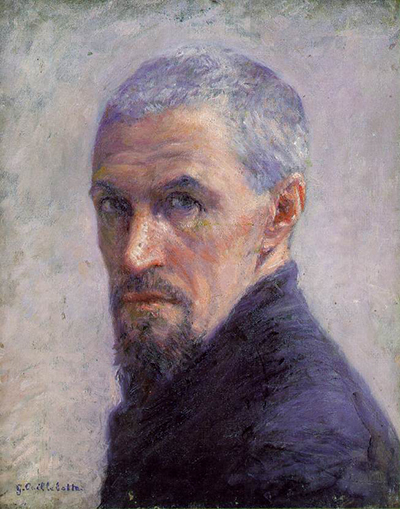
Caillebotte had actually entered The Floor Scrapers into the Paris Salon the year before, but was rejected by the jury. His work was considered too innovative, to the point of vulgarity. And what made The Floor Scrapers so vulgar? It was one of the first paintings to feature working class subjects as its theme. While the Salon glorified depictions of heroes and grandiose moments, Caillebotte glorified modernity, the working class, and everyday life. His technique was more realistic than that of the other Impressionists, but his preoccupation with showing the world as he saw it makes him a groundbreaking figure, even today.
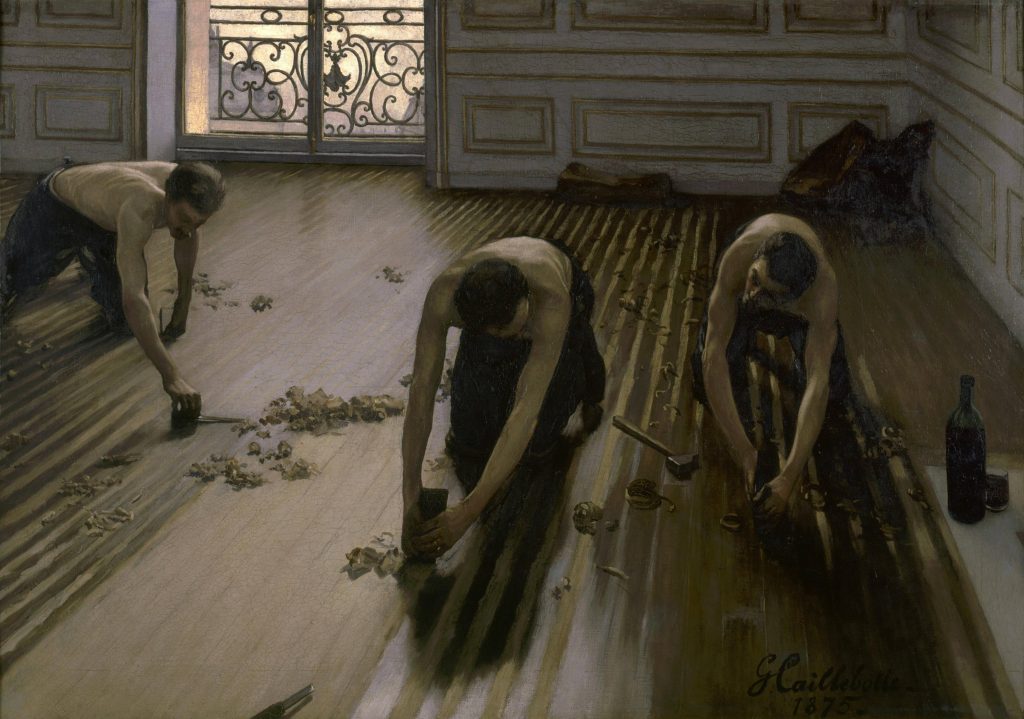
The encouraging, supportive type: nurturing, thoughtful, giving, and forgiving, though sometimes they can get carried away in their eagerness to be appreciated and recognized for all they do.
Enneagram Type 2 Helpers will do everything they can to support the work of other people. They have great initiative and see no obstacles for getting things done. They mentor and take others under their wing. We have paired the Helper/Supportive Advisor with the work of William Morris.
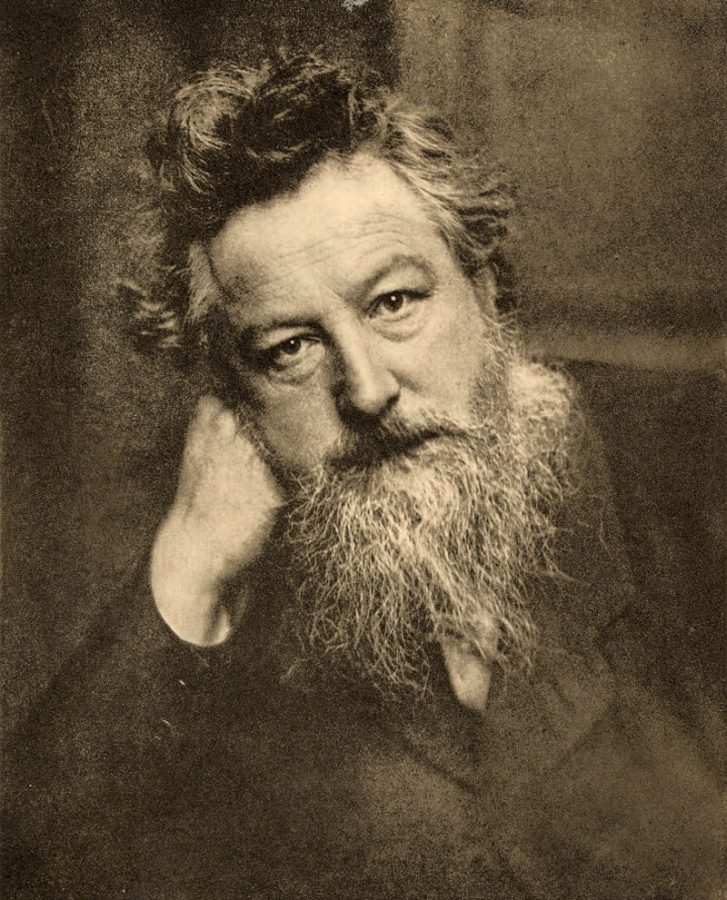
We remember William Morris as the founder of the Arts and Crafts movement but, during his lifetime, people knew him best as a poet and writer. We still feel his influence today in maxims such as “Less is more,” and, “Have nothing in your house that you do not know to be useful, or believe to be beautiful.”
The core of Morris’ work centered on the belief that beautiful, useful, harmonious design improved a person’s character. To meet this criteria, Morris proposed that objects should be designed by craftsmen, not machines. It is from this relationship between object and creator that man derives connection and belonging.
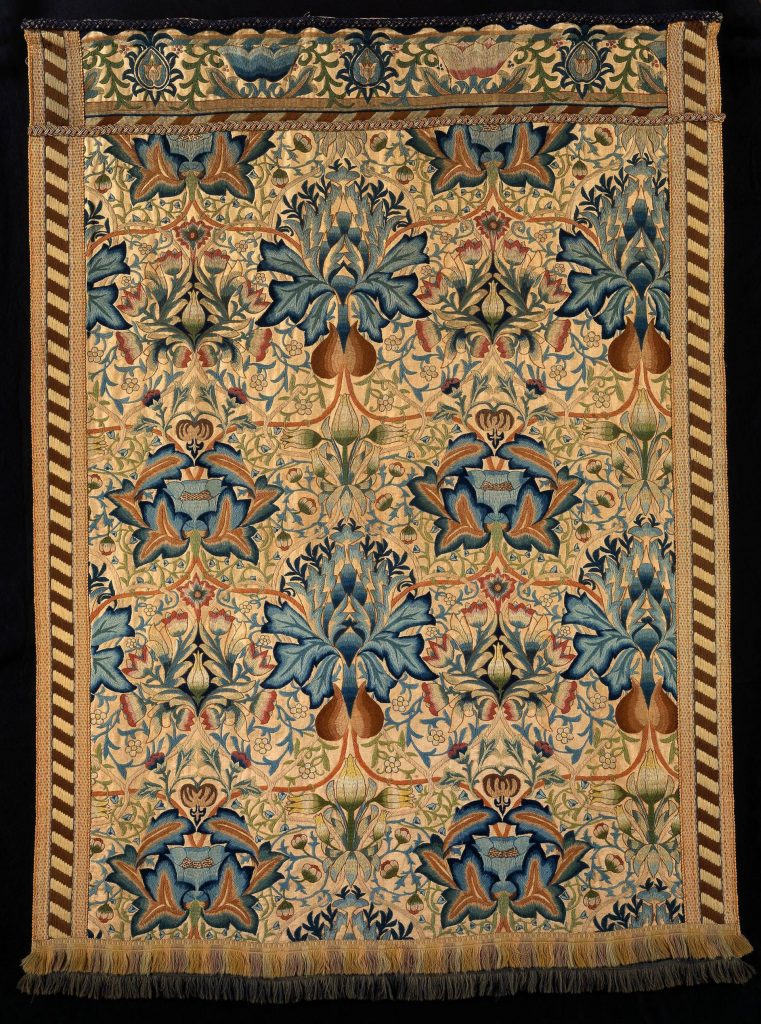
In this response to the industrialization of his time, Morris joined forces with many creators, surrounding himself with inspiring friendships from all walks of life. Through the work of his decorative arts firm, Morris, Marshall, Faulkner & Co., he fostered projects where cross-inspiration and cross-collaboration were at the heart of all design, restoring handmade work to a place of honor. The famous Red House is an example of one such project, where multiple creators achieved a unity of vision.
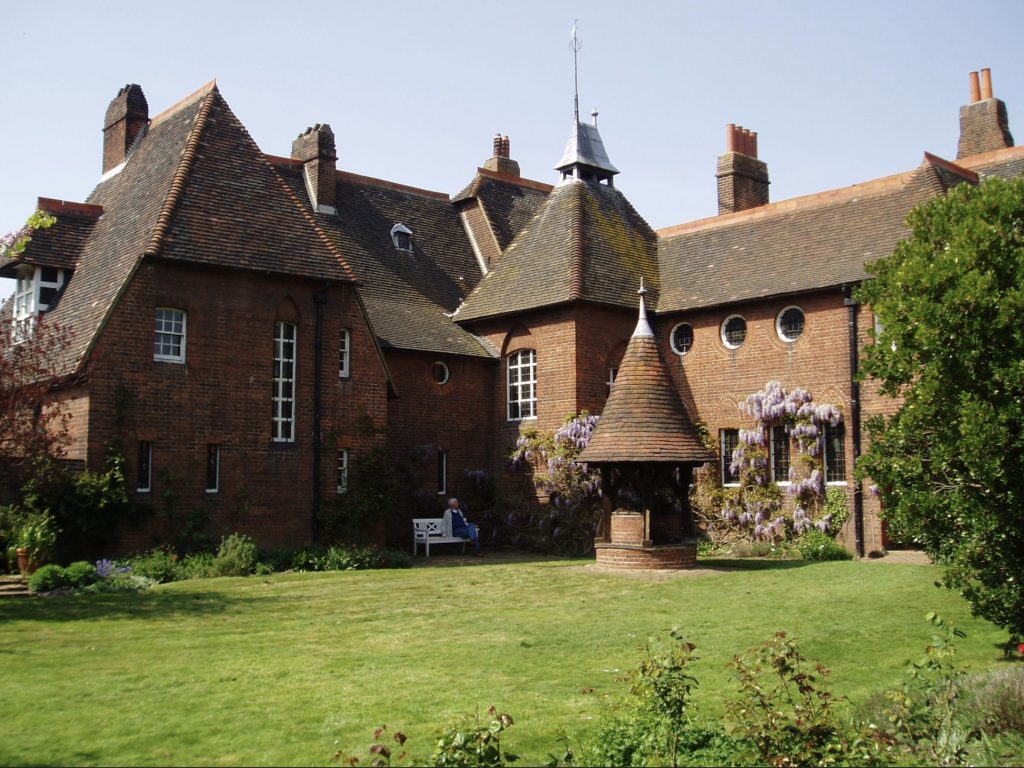
The efficient, successful type: adaptable, single-minded, and driven to achieve, they are very good at overcoming all odds to blaze a new path for themselves. However, sometimes this pursuit of success can make them lose sight of who they really are.
Enneagram Type 3 Achievers desire to feel respected, admired, successful, and valued. We have paired the Achiever with the work of Gian Lorenzo Bernini.
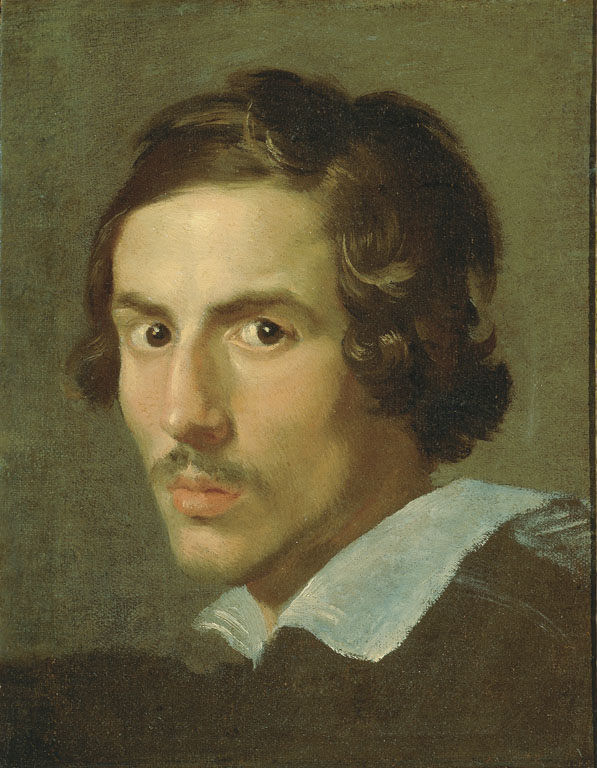
Bernini was born in Naples, yet, after arriving in Rome when he was 7, he rarely ever left it. In fact, Pope Urban VIII, one of his later patrons, said to him, “You are made for Rome, and Rome for you.” And, in truth, it is hard to go too far in Rome without seeing Bernini’s hand somewhere.
Bernini was a child prodigy and his father, Pietro, also a sculptor, encouraged him at every turn. Young Bernini worked hard and succeeded so well that, by the time he was 17, he was already receiving commissions from wealthy, influential people such as cardinal Scipione Borghese.
It was for cardinal Borghese that Bernini created his famous sculpture of David. Quite different from Verrocchio’s, Donatello’s or Michelangelo’s David, Bernini’s work is full of energy and tension. In the expression of his face, we can see David’s strain and concentration as he prepares to aim at his Goliath beyond our view. Bernini’s work, overflowing with emotion and dynamism, became the ideal of Baroque sculpture.
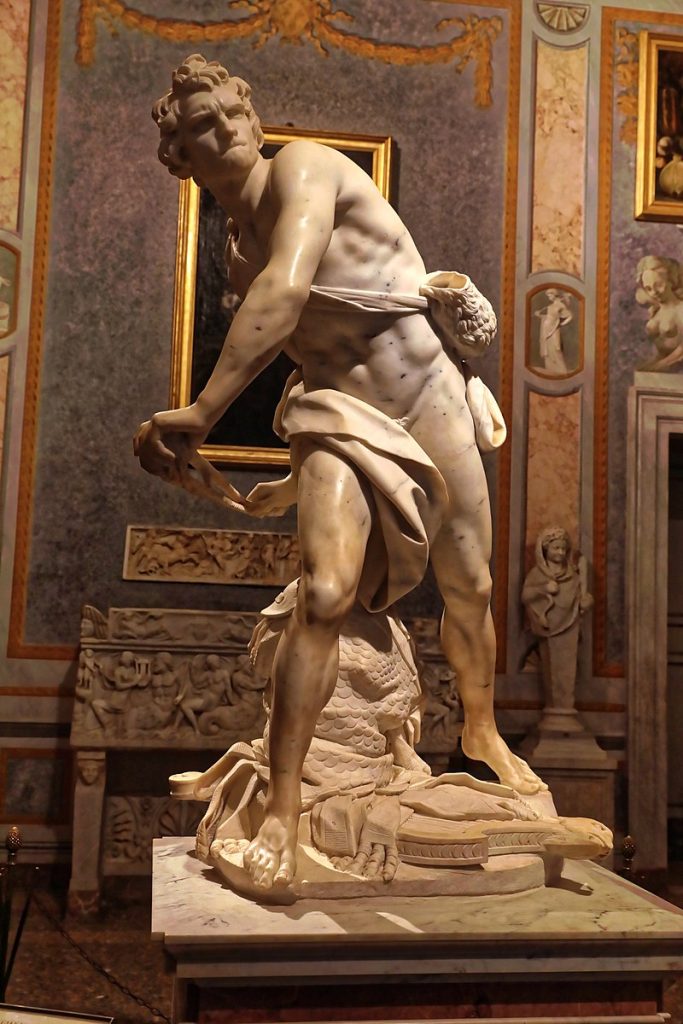
The sensitive, romantic type: creative, artistic, and moody, they thrive equally within both the beauty and the tragedy in the world. Their imagination knows no bounds, but their sensitive nature can sometimes lead to isolation and unpredictability in their relationships.
Enneagram Type 4 Individualists love to feel that they are unique and special. At the same time, they crave belonging and acceptance of their uniqueness. We have paired the Individualist with the work of Frida Kahlo.
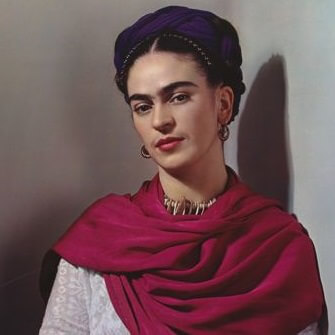
Kahlo is one of the most recognizable personalities of the 20th century. We remember her for her art, but also her political activism, and her unique sense of style. Deep pain, both physical and of the heart, is at the core of her work. When she was a child, she contracted polio and, though she recovered, she walked with a limp ever after. Then, when she was 18 years old, she was involved in a streetcar accident that affected her for the rest of her life.
Besides the physical pain caused by her injuries, she also suffered several miscarriages and passionate relationships that left their mark on her. Rather than bowing down to her trials, Kahlo actually found strength through her pain. She once said, “Pain, pleasure and death are no more than a process for existence. The revolutionary struggle in this process is a doorway open to intelligence.” Her art, in all its shades of bright and dark, invites us to look at our own suffering to find the beauty within it.
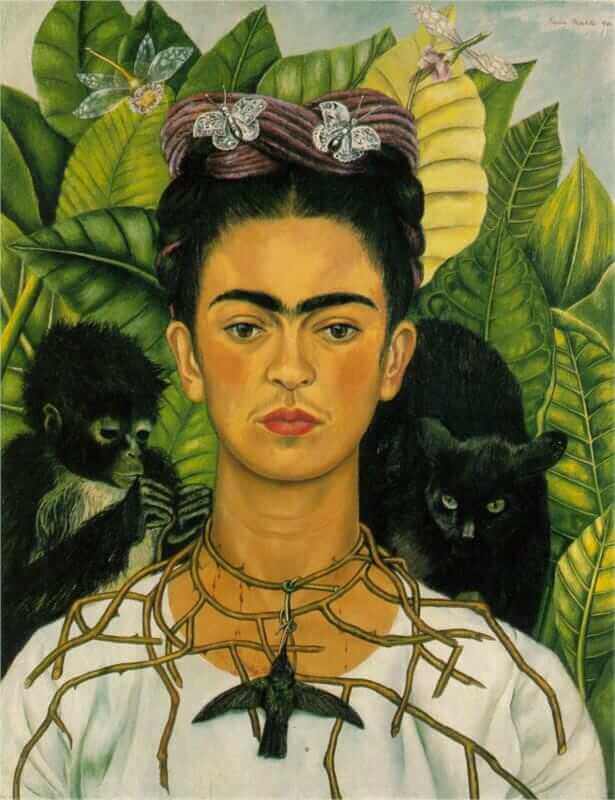
The independent, analytical type: self-sufficient and thirsty for knowledge, their greatest desire is to master skills, explore, feel capable, competent, and autonomous. However, this need for independence and privacy can stem from a fear of having to rely on other people, of not being or knowing enough.
Enneagram Type 5 Investigators love to seek knowledge and share it with others, but they are also very protective of their boundaries, energy, and safety. We have paired the Investigator with the work of Leonardo da Vinci.
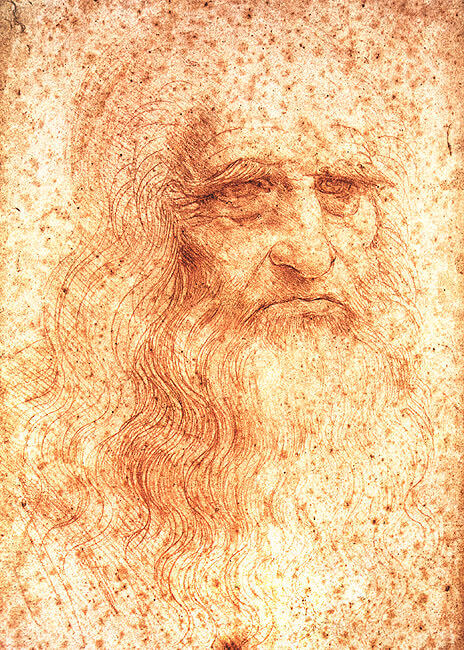
Da Vinci is one of the most recognized geniuses in history. The epitome of a “Renaissance Man,” he was an artist, scientist, architect, and inventor. He was a visionary, leaving countless accurate scientific drawings, and designs for machines that would not become commonplace until centuries after his death. As an artist, he studied anatomy to improve his depictions of the human figure, and he even went beyond by dissecting cadavers to understand the inner workings of the human body.
Da Vinci’s Mona Lisa and The Last Supper are art icons. Here, we present a less-known work called Horse and Rider. This was a study for a larger work that was never completed, and had been lost until the 20th century!
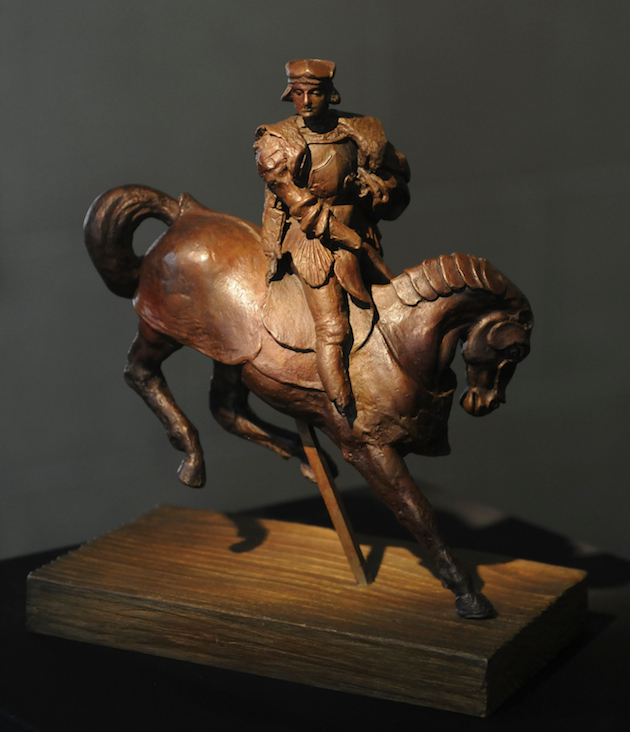
Da Vinci told us so much about the world. He left pages upon pages of writings, scientific notes, sketches, studies — over 7,000 pages worth — yet so very little about himself. Today, by looking at his work, we can get glimpses of the inquisitive man who found joy in understanding the world in all its wonder.
The committed, security-oriented type: Engaging, responsible, anxious, and suspicious. If we look them up on the vocabulary, royalist and loyalist are two different nouns. However, it is a given that they sort of overlapped during monarchy-ruled times. The French artist Anne-Louis Girodet de Roussy-Trioson, one of Jaques-Louis David’s pupils, is famous for his pre-romantic, clear, tidy style and for the prolific production of royal portraits. The fact that he painted Napoleon’s family and several military men doesn’t make him a loyalist, really.
That is why we have paired the Enneagram Type 6 Loyalists with Girodet’s portrait of Chateaubriand.
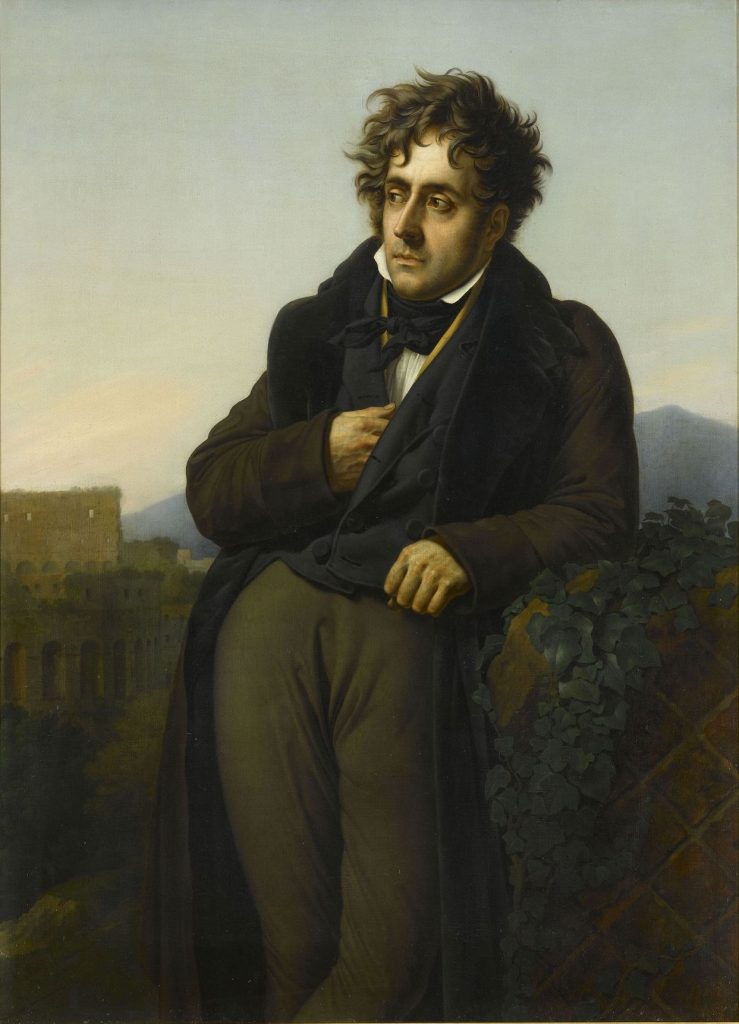
François-René de Chateaubriand was a French writer, politician, diplomat and historian who descended from an old aristocratic family. He dominated the French cultural scene in the first half of the 19th century, igniting the Romantic literary movement of his country. Chateaubriand was a strong royalist for most of his life. He lived through three Revolutions and several types of Monarchy.
Since the days of his youth as a soldier, all the way to the elderly years as a politician, the Vicomte was a committed, prominent figure at the service of France. In the portrait he himself commissioned to Girodet, Chateaubriand stands at the top of a Roman hill, observing and pondering over Roman ruins (we can spot them in the background).
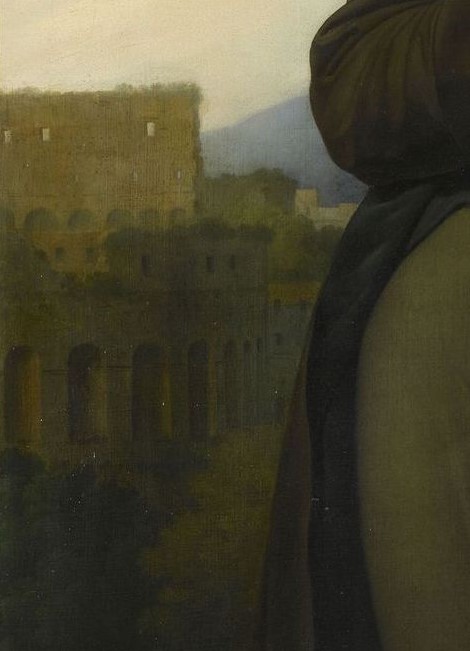
The pose and the light in Girodet paintings are quite singular. The French artist was an innovator, wedged in between Neoclassicism and Romanticism. In his portraits’ production, he paid particular attention to veracity. The result is an abundance of intimate images, aiming to reveal the inner truth of the characters. Chateaubriand’s portrait is no exception.
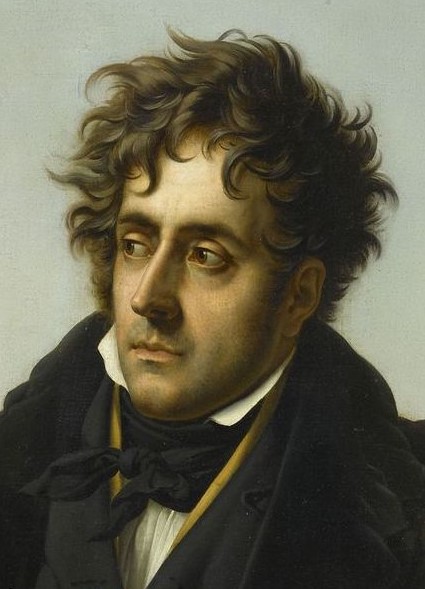
The busy, fun-loving type: Spontaneous, versatile, distractible, and scattered.
When it comes to spontaneity in the art world, Gesturism comes to mind. It is a contemporary movement celebrating the limitless possibilities of the living beings, through creativity. We have paired Enneagram Type 7 Enthusiasts with a passionate creator is artist Sen Shombit, a man of Indian origins, now based in France.
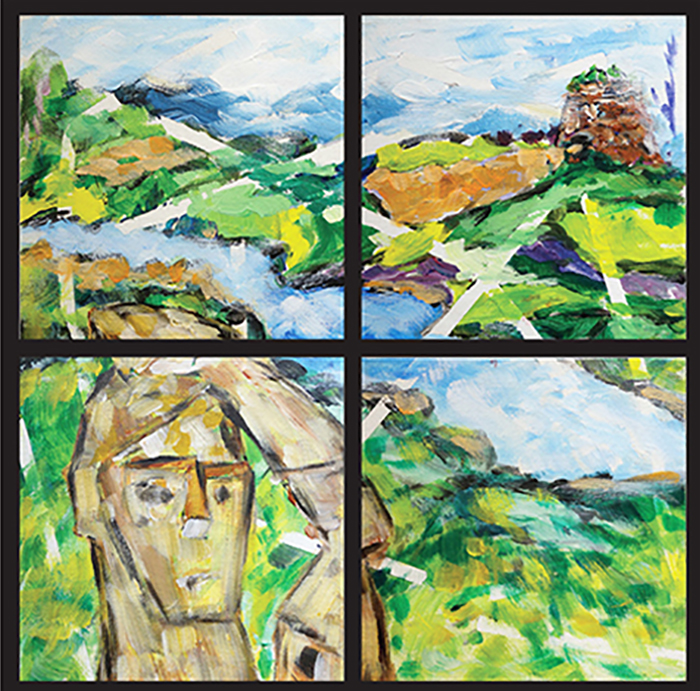
An interactive series of installations, called Désordre Harmony (Disorder Harmony), allow the viewer to rearrange squared portions of Shombit’s paintings within the same magnetized frame. The public must wear gloves before touching the canvas. But it ends there, when it comes to restrictions. The variable re-compositions of the original subject set a boundless energy free. As each piece moves 360°, thousands of different versions can come to life.
The ultra-famous French avant-gardes, from Impressionism to Surrealism, heavily influenced this artist’s style. He adopted both the techniques and the principles of all these ground-breaking movements.
Color was key in French art world of the 18th century. As it happens, it is also a vital component in ancient and modern Indian culture. When the artist started to travel back to his country of origin, he absorbed the joint passion for pigments of the two heritages, the French and the Indian.
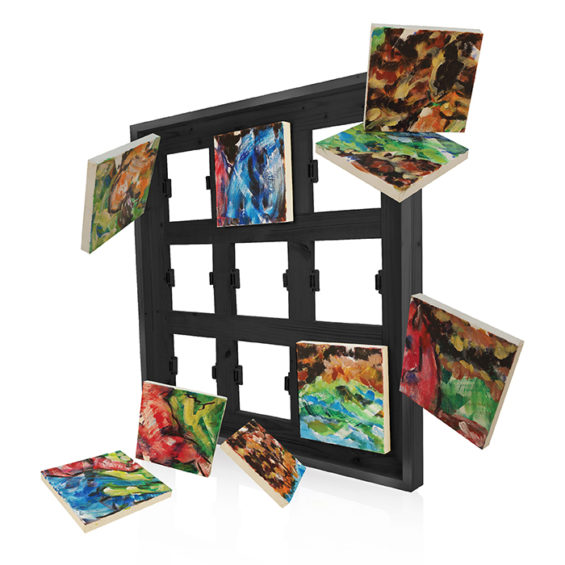
India, with its timeless flux of migrants and its 200 years as a British colony, presents an outstanding variety of population. Inevitably, this entailed heterogeneity of culture, language, behavior and food. This enriching mix also brought a certain ‘disorder’ in the daily aspects of life. Different people coexisting within the same democracy, however, is also a sign that India tries to champion cultural inclusiveness.
From this inspiring concurrence of harmony and disorder comes Sen Shombit’s new concept. In our opinion, the irreverent, energetic bursts of color and these new engaging installations make this artist a great Enneagram type 7!
The powerful, dominating type: Self-confident, decisive, willful, and confrontational.
As far as reputation goes, nobody earned a more controversial one than Michelangelo Merisi – aka Caravaggio. While documents certifying his bad, feisty temper existed since his time, he gained the fame of the damned artists during the 19th century. Together with the ancient concept of verism or realism, the maledettismo (literally damnism) englobed Caravaggio and influenced art historians and their analysis of his work for years.
Caravaggio’s persona seems to match well Enneagram Type 8 Challengers. His mighty pictorial style tightens the knot.
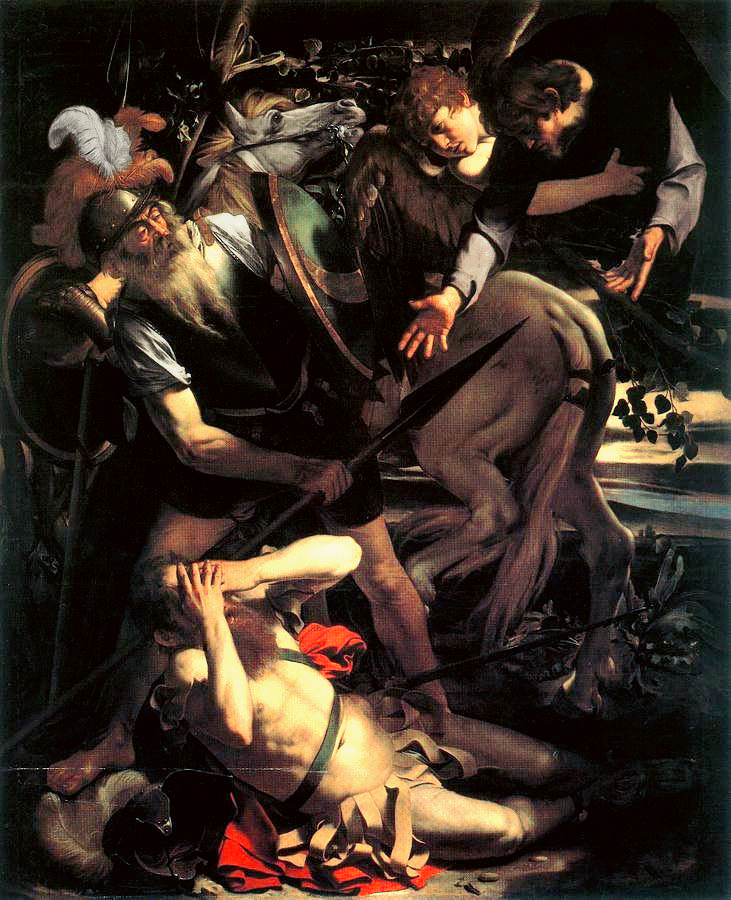
Bad temper, homosexuality, atheism, precociousness and rumors of the rejection of some of his pieces all contributed to create Caravaggio’s myth. The majestic Saul’s Conversion we can see above allegedly was one of those paintings that did not meet the commissioner’s approval. One must wonder, however, if such a controversial character didn’t simply bring upon himself slander from his contemporaries due to his boisterous and fiery personality.
Most of this labelling revealed to be inaccurate and not supported by much evidence. However, there is no doubt that he was confrontational and temperamental. The historical sources revealed that, while in Rome, he was legally sued several times. We also know that in 1606 the artist killed a man during a fight and consequently fled Rome. He was found guilty and sentenced to death. Seeking indulgence from the Pope, he painted a dark, dense and glorious David with Goliath’s Head.
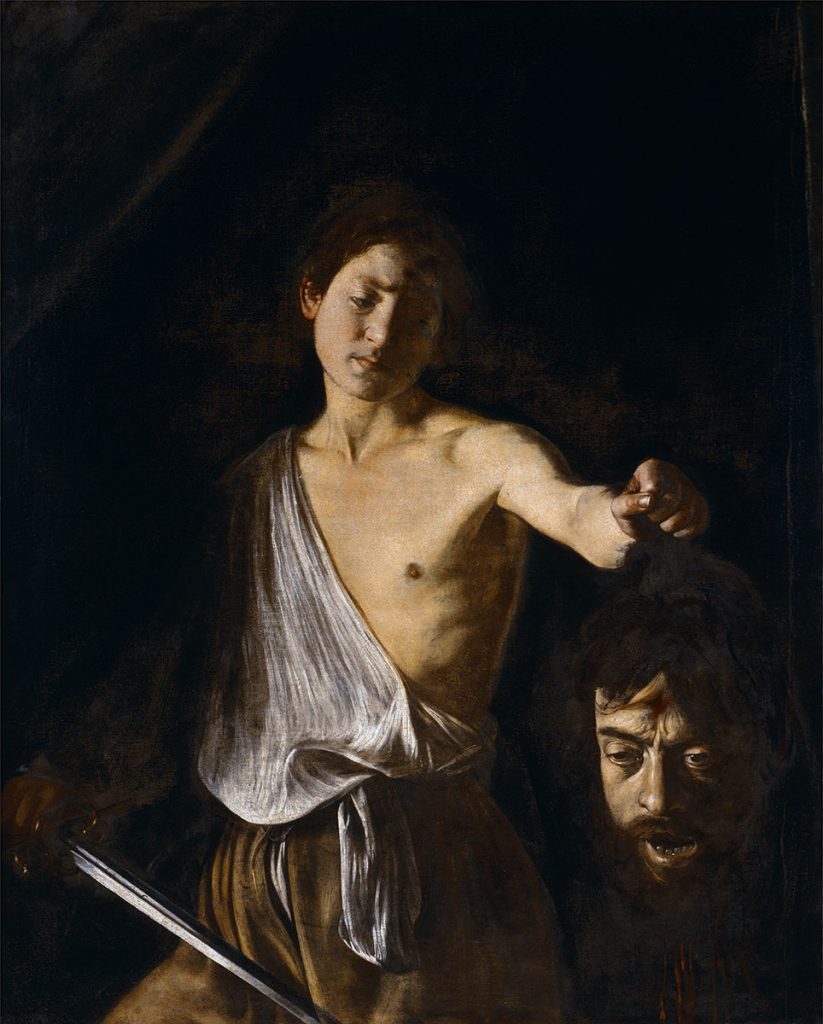
Rather than a victorious pose, Caravaggio gave to David an unmissable, pitiful one. The righteous boy frowns and looks down at Goliath’s head, a Philistine. This wondrous, challenging artist focused on the very detailed facial expression of the severed head. In Goliath, many critics agreed in recognizing the painter’s self-portrait. It would indicate that Caravaggio identified himself with the wrong-doer.
He represented the misery of his conditions and, more broadly, the one of humankind, through the suffering eyes of the giant and his mouth wide open in shock. With such powerful canvas as offering, the Pope could not refrain from granting forgiveness. Sadly, the painter never got to enjoy it as he died in mysterious circumstances, while traveling back to Rome.
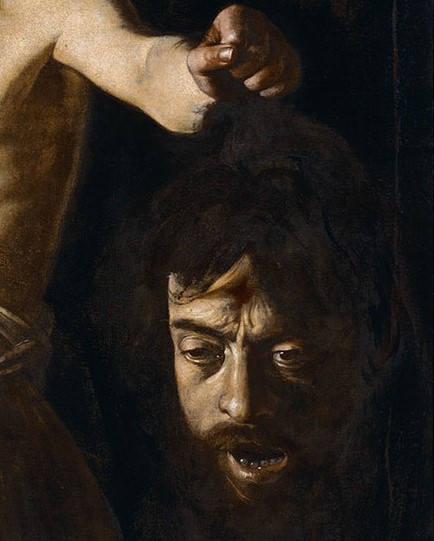
The easy-going, self-effacing type: Receptive, reassuring, agreeable, and complacent.
We have come to the end of this personalities mix n’ match. This is the last of the Enneagram Types: the 9th – the Peacemaker. For us, this corresponded very well with Marc Chagall’s life and artistic work. Author Fred Dallmar wrote a book about Chagall, called The Artist as Peacemaker (from the Peacemakers series). There, a match made in heaven!
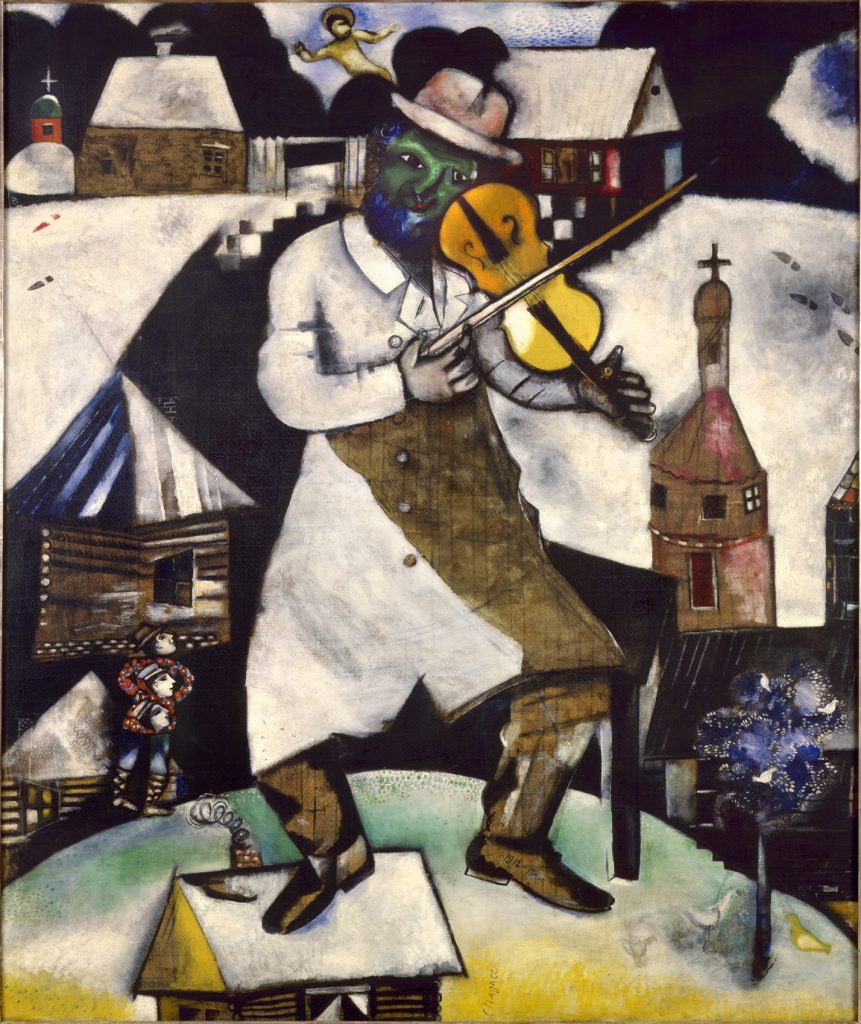
The artist was born in 1887 and lived and worked during an incredibly hard time. Crucially, he was a Russian-French man of Jewish origins and we know what that entailed for thousands of people, during that period. Chagall and his family fled Paris and a secret military operation smuggled them (and many others) out of Europe and into the US in 1941.
Despite the hardship, Chagall conveyed into his art a unique, universal understanding of peace, goodness, and beauty. The happiness he portrayed through certain repeating subjects – like floating human figures and goats playing the violin – is indeed a gift to the viewers.
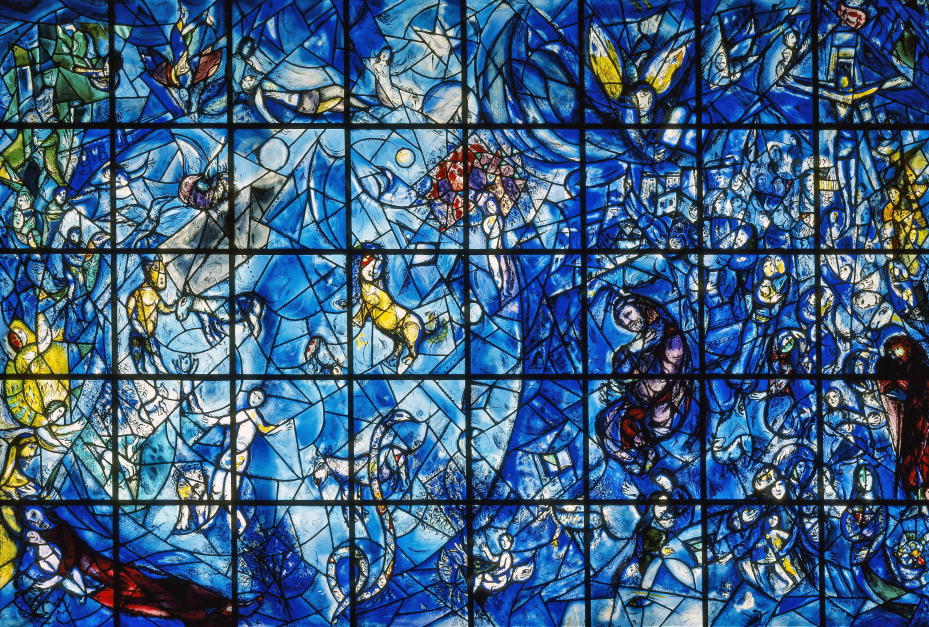
Through paintings and his stained glass work, he kept alive the memory of a culture that conflicts systematically swept away. The two wars displaced a multitude of Jews, making it impossible for them to live life as they knew it. Chagall had his colorful, vivid memories. He recreated familiar, serene scenes which, dream-like and fantastic as they may be, were recollections of a past life. A fine balance between Jewish folklore and the techniques absorbed from Fauvism and Cubism.
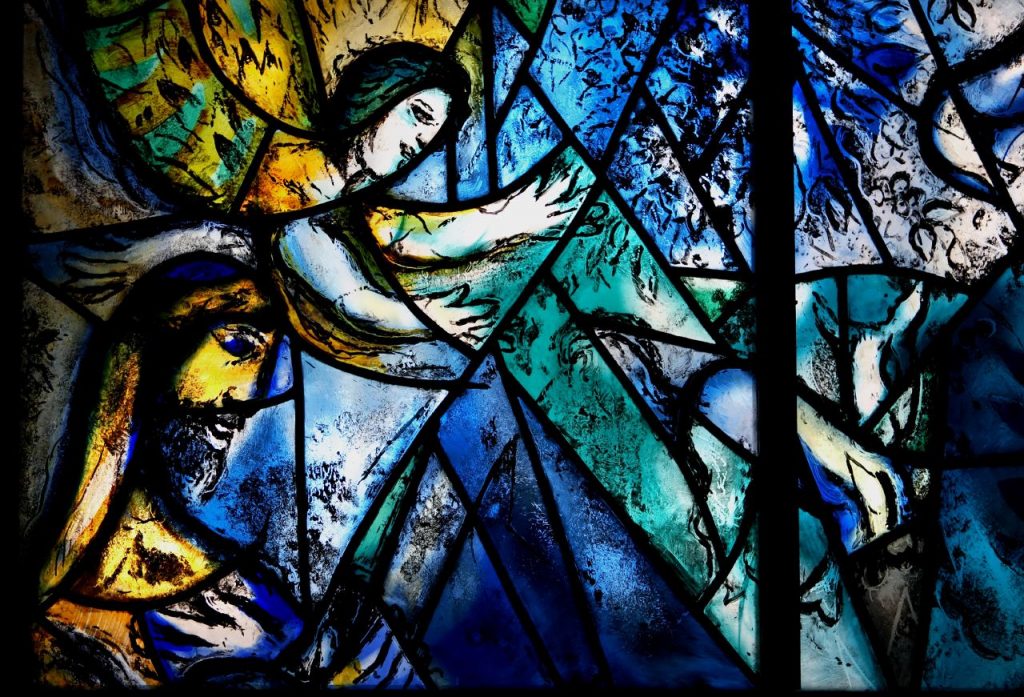
This artist represented so much of the ideal of universal love and understanding that the United Nations asked him to create a monumental stained glass memorial (3.7 x 4.6 mt/ 12 x 15 ft). Its title is Peace and it is located in New York, in memory of a UN secretary who died in an airplane crash, on his way to a mission of peace, together with 15 other people.
So, do you recognize yourself in any of these 9 types? Do you like answering revealing questions about yourself, your behavior, your strengths and weaknesses? Online you can find all sorts of websites about the Enneagram. For the interested ones, it is even possible to get a truthful test by a registered Enneagram Institute. It doesn’t come for free, though.
Whether you believe that our characters can be analyzed and categorized with precision, or that we are instead too complex and erratic to be placed on a diagram, we hope that you enjoyed reading about the artists and the artworks we included. Do you agree with where we positioned the artists on the Enneagram? Let us know in the comments!
DailyArt Magazine needs your support. Every contribution, however big or small, is very valuable for our future. Thanks to it, we will be able to sustain and grow the Magazine. Thank you for your help!